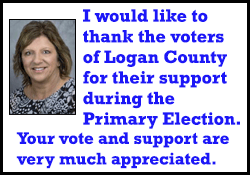|
What the Federal Reserve rate hike means
for U.S. households
 Send a link to a friend
Send a link to a friend
 [March 22, 2018]
By Kate Duguid [March 22, 2018]
By Kate Duguid
NEW YORK (Reuters) - The effects of the
Federal Reserve interest rate hike announced on Wednesday will extend
beyond corporate America to household budgets.
Most people will see at least a minor impact on their credit card
statements in the next few billing cycles, while those with
adjustable-rate mortgages, home equity lines of credit, auto loans and
other loans with variable rates of interest will be hit hardest.
Credit cards with fixed interest rates and annual percentage rates that
don't change for a set period of time won't be immediately affected.
Fixed-rate mortgages are also going to become more expensive, which
could have a chilling effect on the real estate market. Higher interest
rates typically depress home values by making monthly mortgage payments
more expensive.

The Fed lifted its benchmark overnight lending rate by a quarter of a
percentage point to a range of 1.50 percent to 1.75 percent at the end
of a two-day policy meeting on Wednesday. The U.S. central bank also
forecast at least two more hikes for 2018, signaling growing confidence
in the strengthening economy, which could lead to more aggressive future
tightening.
"The cumulative effect (of rate hikes) can be quite significant," said
Greg McBride, chief financial analyst for Bankrate.com.
WHICH CONSUMER RATES WILL BE MOST AFFECTED?
The average rate on a five-year Treasury-indexed adjustable-rate
mortgage is currently about 3.67 percent, according to Freddie Mac. ARM
rates are modified annually, so a 0.25 percentage point increase in the
rate in March wouldn’t have an immediate effect. But when it does kick
in, it could add up to $1,250 a year to interest payments on a $500,000
mortgage.
That mortgage owner could pay an additional $312.50 a month, or $3,750 a
year, in interest if the Fed follows through with two more quarter-point
hikes this year.
The rate hike on Wednesday could add $12.50 a year in interest to a
credit card with a balance of $5,000 and an interest rate of 14.99
percent, the average in the fourth quarter of 2017, according to Fed
data.
That doesn't sound like much. Even $37.50 a year, the amount three
quarter-point rate increases this year would add, may not shock
households.
But consider that approximately $62.50 a year has already been added as
a result of the Fed's previous five rate hikes since late 2015, and
interest payments may be up by $100 at the end of the year.

WHAT HAPPENS TO HOME EQUITY CREDIT LINES?
Interest rates on home equity credit lines are lower, at around 5
percent. "For somebody with a $30,000 home equity line, a quarter-point
rate hike increases the minimum payment by $6 a month. But, this now
being the sixth interest rate hike, the cumulative effect since December
2015 is that a $30,000 home equity line now carries a minimum payment
that is $37 a month higher," McBride said.
[to top of second column]
|

A shopper walks down an aisle in a newly opened Walmart Neighborhood
Market in Chicago in this September 21, 2011 file photo. REUTERS/Jim
Young/Files

Those relationships are not quite so neat in practice. The federal
funds rate, which the Fed determines directly, sets the rate at
which banks lend money to one another. But there are more factors
that determine the interest rate on a consumer loan.
"For every 100-basis-point increase in the fed funds rate,
historically, it has been the case that the adjustable-rate mortgage
rate would go up by 70 basis points," said Michael Cox, founding
director of the O'Neil Center for Global Markets and Freedom at
Southern Methodist University in Dallas, Texas.
ARE RATE HIKES A SIGN THE ECONOMY IS OVERHEATING?
U.S. economic strength is evident with the unemployment rate at a
17-year low and companies receiving windfalls from President Donald
Trump's tax cuts, which they may reinvest to create jobs and improve
wages.
But U.S. wage growth has remained sluggish and household budgets are
tight. Though wages improved in January at the best pace since 2009,
worker pay hasn't made significant improvements since the 2007-2009
recession.
There is evidence in rising debt levels: American households owed a
record high total of $13.15 trillion at the end of 2017, according
to data from the New York Fed.

If wages don't rise as rate hikes mount, contracted spending could
eventually lead to a broader economic slowdown.
IS THERE ANY GOOD NEWS WITH RATE HIKES?
Savers benefit as yields on savings accounts and certificates of
deposit edge higher. The average national savings account interest
rate was 0.6 percent before the Fed began raising rates in 2015,
according to FDIC data. It is now 0.7 percent.
Rates on a 36-month certificate of deposit have gone from 0.48
percent to 0.65 percent. There are, however, internet banks
including Synchrony <SYF.N> and Goldman Sachs' <GS.N> Marcus that
are engaged in an arms race of raising rates on savings accounts,
which are 1.55 percent at the upper end, and CDs.
(Reporting by Kate Duguid; Editing by Jennifer Ablan and Paul Simao)
[© 2018 Thomson Reuters. All rights
reserved.]
Copyright 2018 Reuters. All rights reserved. This material may not be published,
broadcast, rewritten or redistributed.
Thompson Reuters is solely responsible for this content.
 |